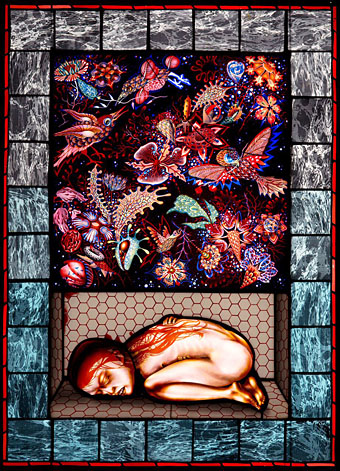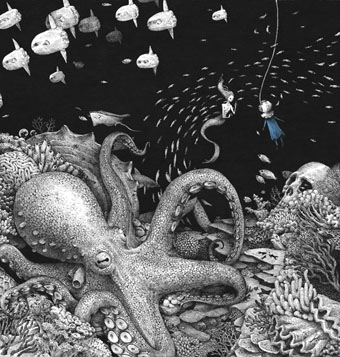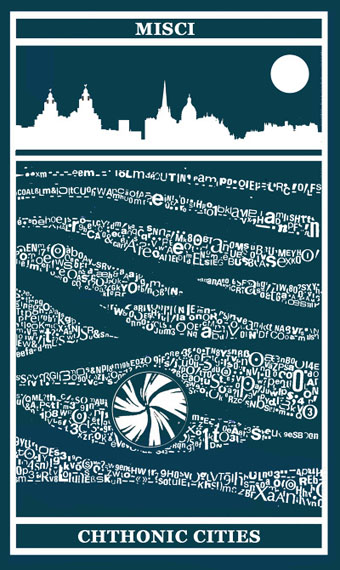Anchoress by Judith Schaechter.
• The publication of Alan Moore’s Jerusalem is imminent so the NYT asked him about his favourite books and writers of the moment. For the next post I’ll be writing about my own involvement with Moore’s novel.
• Chris Campion on David Bowie and the missing soundtrack: the amazing story behind The Man Who Fell to Earth. Related: cinematographer Anthony Richmond on his memories of shooting the film.
• Mr Beatnick on how the B-side of Change The Beat by Beside became the most sampled song of all time.
• Lisa Hix on An Un-Conventional Thirst: Collecting 7Up’s most beautiful, hallucinatory billboards.
• Rub Out The Word: Steve Buscemi & Elliott Sharp present texts by William Burroughs.
• Opening next month at the Corridor Gallery, Brighton (UK): An exhibition of art by Ian Miller.
• Folk singer Shirley Collins will be releasing a new album, Lodestar, her first for over 35 years.
• A trip to the mythical Isle of Tiki, Polynesian Pop and A/C Eden.
• Mix of the week: Harvest Hymns by Melmoth The Wanderer.
• Wandering In Space: composer Jherek Bischoff interviewed.
• Heavy Water is a new short film by Adam Scovell.
• “When will New York sink?” asks Andrew Rice.
• The World’s Largest Synthesizer
• The Thai Occult by Jenx
• RIP Richard Neville
• Heavy Rock (1976) by Sound Dimension | Heavy Charm (1995) by The Ear | Heavy Water (2008) by Crackle




